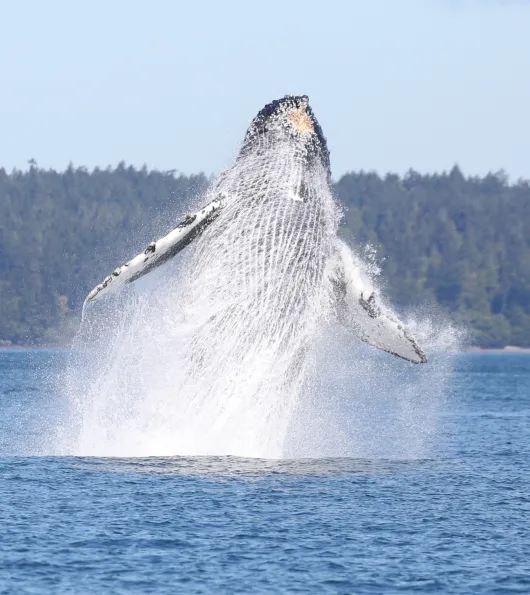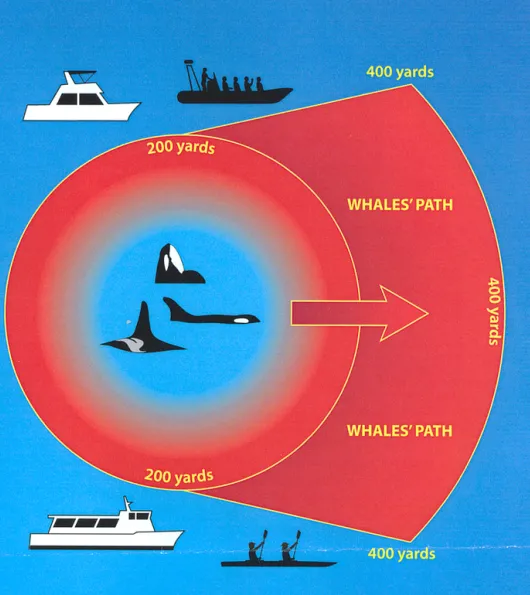Whale Watching Guidelines

SAN JUAN SAFARIS WORKS AT
Keeping Wildlife Safe
As an active member of the Pacific Whale Watch Association (PWWA), San Juan Safaris follows all guidelines for respectful and safe wildlife viewing. Owner and Captain Brian served as the president of the organization for 3 terms and is now an active board member.
Regulations for viewing orca whales require that boaters stay 200 yards away and keep clear of the whales' path.

Pacific Whale Association Guidelines
Operation of Vessels in the Vicinity of Whales
- A vessel should approach an area of known or suspected whale activity with extreme caution.
- A vessel within 1⁄2 mile (800 yards) of a whale is considered to be in the vicinity of whales.
- A vessel entering the vicinity of whales within 1⁄2 mile of a whale is considered to be in the slow approach zone and should operate at a low wake speed. A vessel within 1⁄4 mile of a whale is considered to be in the slow zone and should operate at a recommended 7 knots or less, with a reduced wake.
- The speed transition should be observed in reverse while a vessel is departing the vicinity of whales.
- When possible, all sonar, depth sounders, fish finders and other underwater transducers should be shut off whenever a vessel is in the vicinity of whales.
Lime Kiln Lighthouse, San Juan Island, Special Operating Area
Vessels should remain a minimum of 1⁄2 mile (800 yards) from the light beacon of the Lighthouse at Lime Kiln State Park on San Juan Island when whales are in the vicinity.
West Side of San Juan Island Special Operating Area
Vessels should remain a minimum of 1⁄4 mile (400 yards) from the main shoreline of the west side of San Juan Island when between Eagle Point and Mitchell Point when whales are present.
Race Rocks Special Operating Area
- “Go Slow Zone” = 1/8 mile (220 yards) from any rock or landmass around Race Rocks.
- Vessels will slow on their approach to Race Rocks such that speed at 1/8 mile (220 yards) from any rock or landmass is reduced to approx. 7 knots (minimal wake and wash, relative to the condition of the seas state at the particular time).
- Vessels in the "Go Slow Zone" will remain as close to mid-channel as possible between the major rock outcroppings known as Great Race, North Race Rock, West Race Rock and Helicopter Rock.
- While in the "Go Slow Zone" vessels will transit according to weather conditions. Drifting is encouraged relative to other boat traffic and where safe navigation is not compromised.
- Vessels exiting the area may increase speed gradually outside the "Go Slow Zone".
- Vessels will remain 1/8 mile (220 yards) outside the Go Slow Zone whenever any whale species are present in the Race Rocks Reserve (Go Slow Zone).
Source: pacificwhalewatchassociation.org